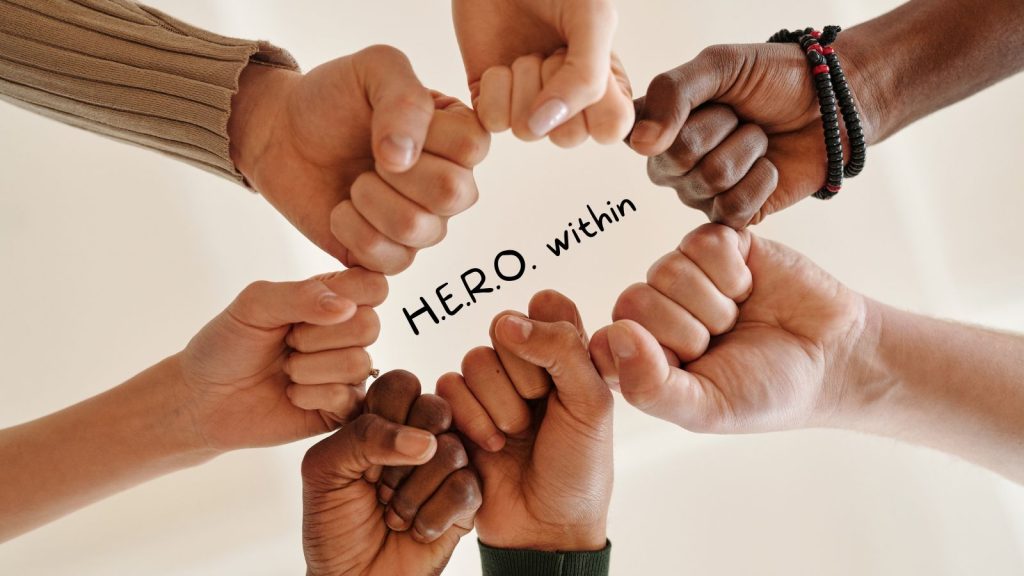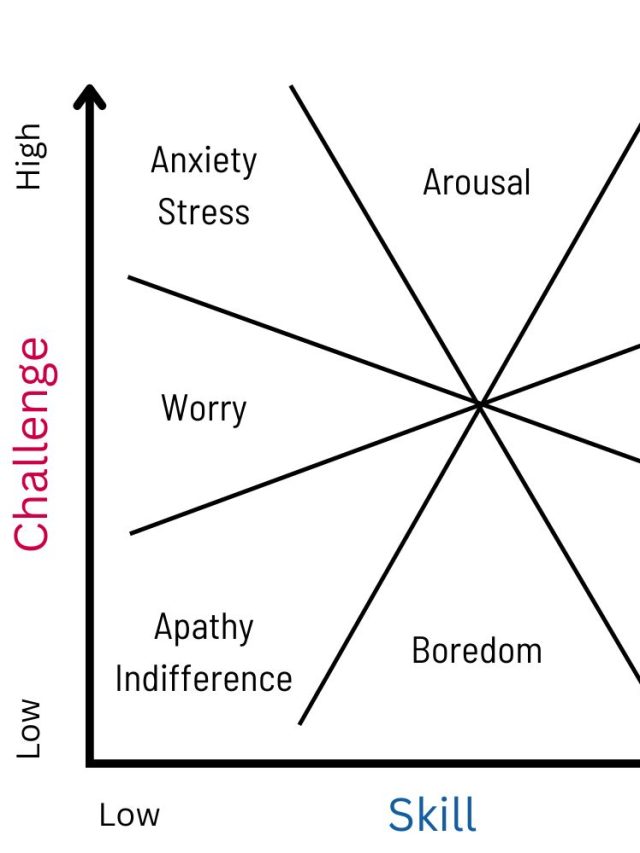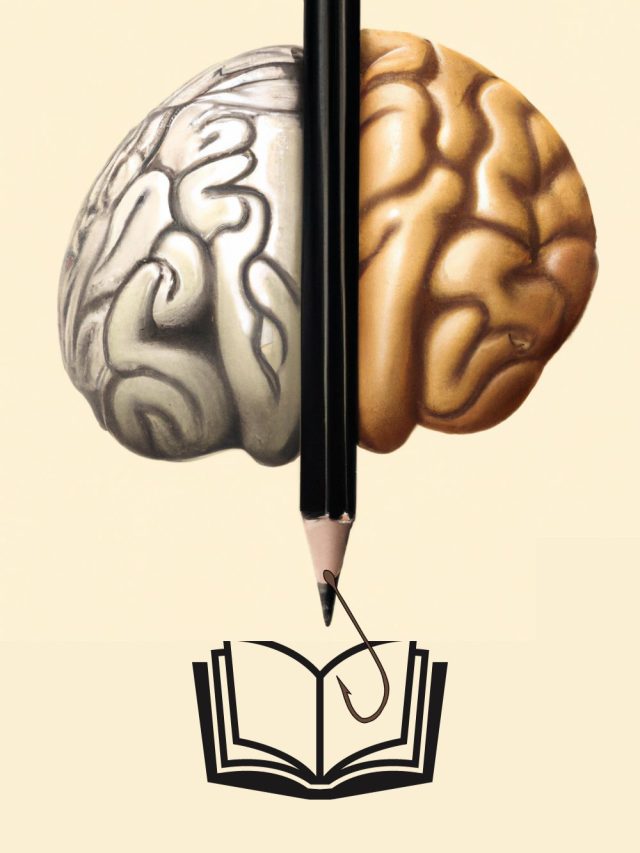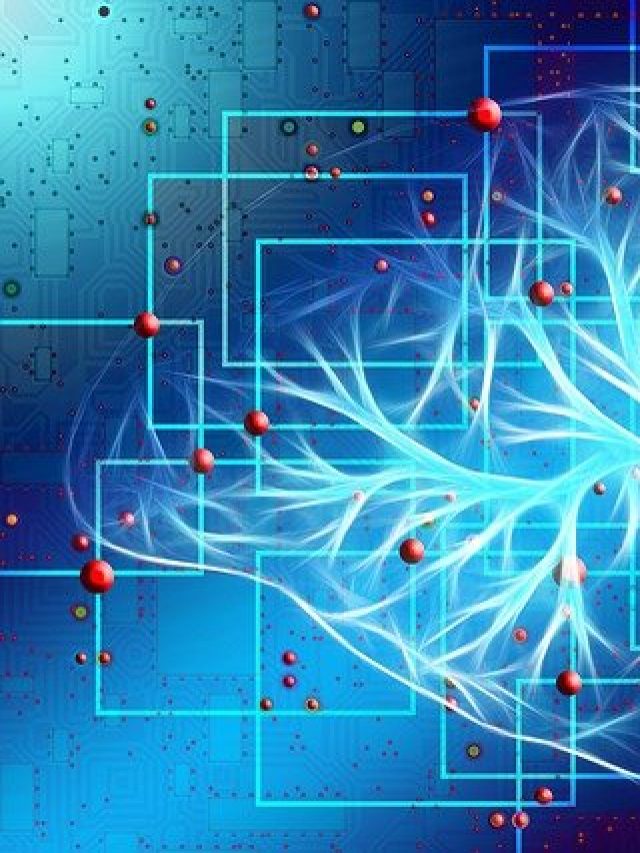Like having wealth which is financial capital, there is psychological capital which is mental wealth that we can tap into for a better life. Psychological Capital (PsyCap) is a set of 4 psychological resources: Hope, Self-efficacy, Resilience, and Optimism. Studies show they work together and improve well-being and organizational performance at a fundamental level.
Research across many countries and thousands of employees[1] shows that PsyCap improves well-being at work, productivity, efficiency, performance, work satisfaction, and adjustment to work difficulty. Generally, high PsyCap for an entire workforce and individual is good for both.
On the individual well-being level, psychological capital is responsible[2] for better attitudes, better health, higher life satisfaction, higher adjustment, useful behavior, and better relationships.
PsyCap is made up of the H.E.R.O within

- Hope: Technically, hope is made up of waypower and willpower[3]. Waypower is seeing a clear, realistic path to positive outcomes; it is not just an expectation like optimism. It depends on indicators that suggest something can actually work out. For hope to occur, there is waypower from some hint somewhere that shows there is a realistic possibility of succeeding or having a better situation. Ideas like “seeing a glimmer of hope,” “light at the end of a tunnel” or “luck finally working in my favor” are all descriptions of waypower. Someone succeeding at doing a task correctly for the first time is waypower too. Willpower is a mental commitment to do and act constructively when things are difficult. People feel genuinely hopeful when they have waypower more than willpower.
- Resilience: Resilience is our ability to adjust and resist breaking under difficult circumstances and stress.
- Self-efficacy: Self-efficacy is more popularly called “realistic confidence.” It is our belief in our capacity to do something, including skills, abilities, and understanding of a situation.
- Optimism: Optimism is an expectation of better things in the future. It’s a point of view and thinking pattern where uncertain situations are interpreted in a positive way instead of negative. Relative to Hope, optimism is more like wishful thinking and putting things on faith.
How to increase HERO
- Keep a problem-solving mindset and look for help and hints for success so you see a clear “waypower” path to see yourself succeed (Hope)
- Improve skills and test them out even when you are outside your comfort zone (Self-Efficacy)
- Focus on behavior and thoughts related to adapting to circumstances, not your feelings. Learn from others and build life skills (Resilience)
- Have positive expectations even when you are uncertain (Optimism)
The benefits of psychological capital are straightforward – better work-life, higher productivity, better performance by a whole group of people like a company or a team, and better personal quality of life. In everyday life, PsyCap makes one adjust adequately and thrive during stressful, ambiguous, and changing circumstances.
How does Psychological capital work?
Hope, Optimism, Resilience, and Self-efficacy have 5 things in common that drive a change in one’s life: Agency, deliberate behavior (called conation), positive appraisals, sense of control, and influence
- Agency in goal pursuit: Agency describes our tendency and ability to take responsibility and self-directed actions toward a self-defined goal. Taking charge of how one spends time to make room for exercise and saying Yes/No to events is showing high agency.
- Deliberate behavior: To pursue a goal, one needs conation, which includes an evaluation of rewards at the end of the goal, rewards in the process, planning, and avoiding negative consequences through inaction or self-neglect. These calibrate purposeful behavior and deliberate, planned actions.
- Positive appraisals: Hope, resilience, optimism, and self-efficacy have a core component of processing information in a positive way – be it outcomes, skills, self-perception, or probability. Positive evaluations can be a habit and develop over time in ways that reduce the impact of negative evaluations too.
- Sense of control: The benefits of PsyCap mainly come from a person feeling they have the freedom to make choices and the capacity to follow those choices and can successfully exert control appropriately on the effects of those choices. Sense of control emerges from the capacity to make and execute decisions with self-interest and that turns into a sense of satisfaction with how one spends their time and effort.
- Influence: PsyCap can spread from leader to follower or follower to leader and between employees and followers. So it essentially spreads across all humans across all roles.
At the most fundamental level, psychological capital includes nuanced aspects of HERO with behavioral themes
Active vs. Passive behavior
Hope and Self-efficacy are built from a person actively acquiring and developing skills and hope comes from the idea that one can be successful in practically reaching a positive outcome. Optimism and resilience are more passive components of behavior. Optimism is essentially hope without waypower with only better expectations.
Internal vs. External focus
Hope and Self-efficacy also have an internal focus. A practical concept called “waypower” largely depends on a person’s problem-solving capacity. Waypower creates an opportunity to feel hopeful because it describes one’s ability to find multiple paths to a solution and be determined to take one of those. Optimism and resilience have an external focus. Optimism contains an evaluation of circumstances where factors like luck, other’s behavior, and new developments because they affect whether one expects something positive to happen. Resilience is internal but depends a lot on how one bounces back from challenges that the environment creates, like accidents, breakups, unemployment, etc.
Synergy in HERO
The HERO components interact and work synergistically. For example, developing skills can build confidence (self-efficacy) that allows a person to have more solutions to a problem (waypower hope), and that can help one bounce back from work stress (resilience). Resilience can then inspire more optimism for unrelated problems in one’s personal life. Altogether, each HERO component increases psychological capital.
How does psychological capital develop and affect life/work satisfaction?
At a deeper level, psychological capital and its HERO components emerge from very fundamental processes (as described in this paper[4]). They explain how psychological capital is created and also how psychological capital improves well-being and life/professional satisfaction.
- Positive cognitive appraisals: Positive evaluations of information depend on the nature of information, predispositions like personality, mood, and habitual ways of thinking. When the evaluation is positive, it can start a cascade of more positive evaluations and also buffer against the brain’s default tendency to overvalue and highlight negative information. One can deliberately interpret negative and neutral information positively. This would highlight certain rewards, challenges, and possibilities in new ways that help build hope, optimism, and resilience. It would also create incentives to build skills that then foster confidence (self-efficacy) that fuels hope, optimism, and resilience.
- Positive emotions: Positive emotions are known to buffer against negative emotions, help in recovery from the stress of negative emotions, and broaden perspectives that make a person more active and energetic. Positive emotions can seed the development of PsyCap and also be an outcome of a high PsyCap creating a positive feedback loop. Positive emotions can more easily inspire positive cognitive appraisals than negative emotions. However, negative emotions can give a reality check on wishful thinking. Anxiety, for example, might motivate resilient behaviors to reduce anxiety. The broaden and build theory – positive emotions broaden perspectives, change thought patterns, and motivate productive, healthy, and creative actions – explains how positive emotions trigger an increase in PsyCap and how PsyCap can continue the broaden and build loop.
- Social learning: PsyCap directly affects behaviors that improve well-being and work-life satisfaction. Most of these behaviors are learned through imitation and mimicry of someone with higher PsyCap – like an employee adopts the behaviors of someone more productive. In some cases, the behaviors are constructed through expectations – like a student uses feedback to improve the quality of assignments based on other model assignments. These expectations would drive a person to adopt goal-oriented micro-behaviors that affect productivity, like note-taking, which in turn improves optimism, self-efficacy, and broader domains like grades.
- Conation: Conation is a goal-directed, proactive, effortful, and deliberate aspect of motivation that doesn’t rely on habits or default tendencies. Conation is a core component of the mind which effectively guides behavior that helps us adapt, avoid harm, seek rewards, and maintain a healthy status. When someone says you must work toward building your skills and motivation, they are talking about conation and not the default motivation coming from your biology.
- Memory: Memories have a strong effect on emotions and behavior, but only some memories get to influence them. Humans have selective memory – not everything is remembered, and not all aspects of an experience are cohesively stored in memory. Some memories lose their influence on behavior over time, and some gain influence (depending on the emotional nature of the memory). On top of that, some memories are rewritten and interpreted differently when they are remembered. As a result, only selective memories are available to reach our awareness and only a portion of those get limited attention. Positive memories can induce a positive mood and vice versa. Psychological capital can then, by its very nature, affect what is remembered and how it influences future behavior.
- Neural plasticity: PsyCap is described as a state and not a trait, meaning it is malleable and changes over time. Neural plasticity[5] is a general tendency for the brain to rewire itself and change its configuration to accommodate new learning. Plasticity is particularly important because it regularly occurs in the cortex and the cortex is the location where cognitive processes manifest, emotions are put into words, and conative activities (planning, goal-defining) are triggered. Neural plasticity allows a change in one’s psychological capital and how it further affects life satisfaction. The HERO components are all plasticity-dependent – self-efficacy (an outcome of thinking and learning), resilience (an outcome of implementing behaviors), optimism (reinterpreting information in a positive light), and hope (problem-solving and success-oriented thinking).
How to increase psychological capital
- Reword emotions and re-appraise thoughts to be more solution-focused.
- Acquire skills.
- Understand the mechanisms of how hope, optimism, resilience, and self-efficacy affect real life.
- Stay accountable and monitor your growth.
- Make specific predictions about skills, what others do, and what will happen if you do something. Write them down, and evaluate the accuracy of your predictions.
Similar to PsyCap, you also need psychological richness for higher well-being, but that’s a different and very interesting story!
Sources
[2]: https://www.annualreviews.org/doi/abs/10.1146/annurev-orgpsych-032516-113324
[3]: https://journals.sagepub.com/doi/abs/10.1177/1534484302013003?journalCode=hrda
[4]: https://www.annualreviews.org/doi/abs/10.1146/annurev-orgpsych-032516-113324
[5]: http://PsyCap can spread from leader to follower or follower to leader and between employees and followers. So it essentially spreads across all humans across all roles.

Hey! Thank you for reading; hope you enjoyed the article. I run Cognition Today to paint a holistic picture of psychology. My content here is referenced and featured in NY Times, Forbes, CNET, Entrepreneur, Lifehacker, about 15 books, academic courses, and 100s of research papers.
I’m a full-time psychology SME consultant and I work part-time with Myelin, an EdTech company. I’m also currently an overtime impostor in the AI industry. I’m attempting (mostly failing) to solve AI’s contextual awareness problem from the cognitive perspective.
I’ve studied at NIMHANS Bangalore (positive psychology), Savitribai Phule Pune University (clinical psychology), Fergusson College (BA psych), and affiliated with IIM Ahmedabad (marketing psychology).
I’m based in Pune, India. Love Sci-fi, horror media; Love rock, metal, synthwave, and K-pop music; can’t whistle; can play 2 guitars at a time.










